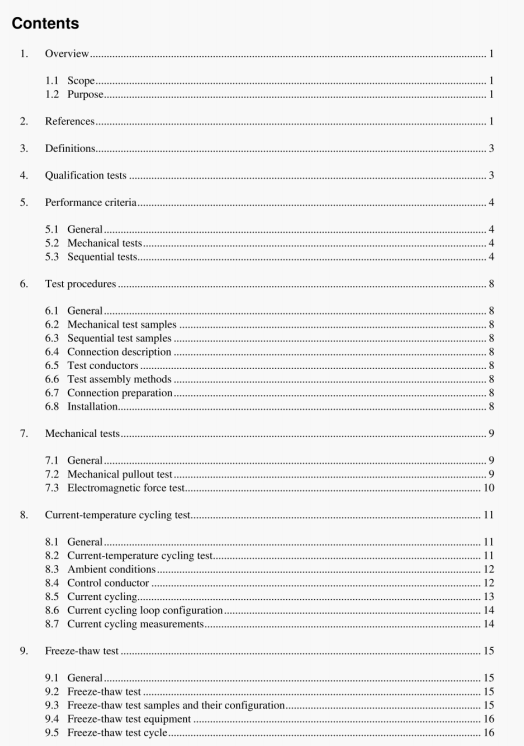IEEE Std 837:2002 pdf download.IEEE Standard for Qualifying Permanent Connections Usedin Substation Grounding.
7.3.3 ElectromagnetIc force test current
The magnitude of the test current for this test shall be the value of an asymmetrical current delined as follows:
a) Calculate the rrns symmetrical value of fusing current for a 1.0 second duration for the size of the control conductor (see Annex C. This is the minimum rms symmetrical test current that shall be applied.
h) The peak value for the first half cycle of the test current shall he a minimum of 2.7 times the rrns teM current calculated above.
C) The XJR ratio of the test circuit shall be such that the test current contains a dc componem resulting in the first peak of the test current having an asymmetry and the magnitude as stated above. The minimum X/R ratio is 20.
7.3.4 Electromagnetic force test current duration
The actual test current duration shall be a minimum of 0.2 second in order to produce the electromagnetic force. Care should be taken to avoid a test duration approaching 1.0 second, as this is the duration for fusing the control conductor.
7.3.5 Electromagnetic force test number of surges
The test shall consist of three surges. Repeat each surge after the conductor has been allowed to cool to lOt) or less.
7.3.6 Electromagnetic force test resistance measurements
Resistance shall be recorded for each sample, in accordance with 5.3.2,1 initially and 5.3.2.2 after the three limIt surges when samples have returned to ambient temperature.
8. Current-temperature cycling test
8.1 General
This lest is intended to ensure the confonnance to resistance criteria of connections subjected to temperature changes caused by fluctuating currents.
8.2 Current-temperature cycling test
This test shall be the Iirst test conducted in a series of sequential tests, as listed in Table 1 (see Clause 4).
8.2.1 Conductor combinations
When joining difierent types or sizes of conductors, the selection of the conductor combinations and test current shall be that which results in the highest connection-temperature while producing the conductor temperatures specified in Table S. The following examples are provided to give some direction in maximizing the temperature of the test loop while minimizing the thermal heat-sink properties of the loop components.
IEEE Std 837:2002 pdf download
